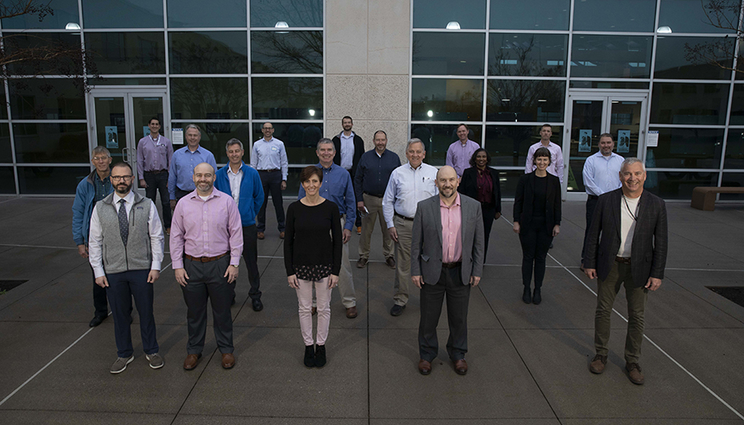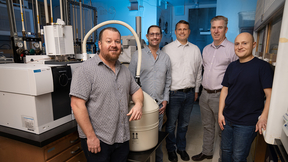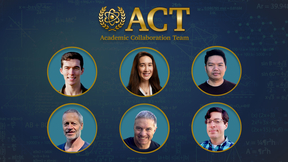LLNL and Y-12 partner to accelerate production, innovation for U.S. nuclear deterrent
 (Download Image)
(Download Image)
Representatives from LLNL and Y-12 toured the electron beam cold hearth melter, which will help reduce the waste and cycle time in producing uranium alloy ingots.
Lawrence Livermore National Laboratory (LLNL) and the Y-12 National Security Complex have teamed up to rapidly modernize legacy technology and production methods of crucial components for the U.S. nuclear deterrent.
A leading example of this collaboration is the recent successful installation and testing of the electron beam cold hearth melter (EBCHM) – a machine that can melt and cast various metals including uranium alloys. When compared with legacy production methods, EBCHM has the potential to improve material utilization, drastically reduce waste and shorten the cycle time for producing metal ingots.
EBCHM systems, commonly found across manufacturing industries for commercial purposes, is a favored fabrication technology for its efficiency in recycling and alloying high-melting point metals for aerospace applications. LLNL’s early investments in fundamental materials research capitalized on the public EBCHM technology and discovered that the system could be used to reliably alloy and recycle uranium alloy materials.
To take the technology from concept to delivery, LLNL and Y-12 partnered to procure and install an EBCHM system in Oak Ridge, Tennessee. Utilizing manufacturing space in Oak Ridge and unique capabilities to handle hazardous materials has enabled the joint LLNL and Y-12 material teams to test and rapidly mature the EBCHM technology, with the goal of making it a standard production method for metal for stockpile components across the national security enterprise.
Y-12’s Depleted Uranium Technologies Program Manager Pamela Moor emphasized EBCHM’s capability to replace particularly difficult, multistep and expensive alloying processes seen in legacy production methods.
“We are proving that we can successfully drive innovation within the national security enterprise with this first-of-its-kind partnership between LLNL, Y-12 and Manufacturing Sciences Corporation,” Moor said. “With the EBCHM, it will potentially make us more efficient in meeting our goals in the future and we are excited by the possibilities of other production partnerships we can build together.”
Since the installation of the EBCHM with Y-12 in 2021, the teams have produced a number of test metal ingots with recycled material and completed several alloying runs for demonstrating the capability of in-situ alloying.
Bradley Wallin, principal associate director for LLNL’s Weapons and Complex Integration Directorate, said the project strengthens the relationship between LLNL and Y-12 and helps meet the needs of the nation.
“This partnership between LLNL and Y-12 demonstrates our commitment in implementing programs and processes to help meet the nation’s stockpile modernization program and strengthening our deterrence posture,” Wallin said. “I applaud the hard work of everyone who has been part of this project in ensuring the effectiveness of the program.”
Contact
 Michael Padilla
Michael Padilla
[email protected]
(925) 341-8692
Related Links
Y-12 National Security ComplexTags
DefenseStrategic Deterrence
Featured Articles







